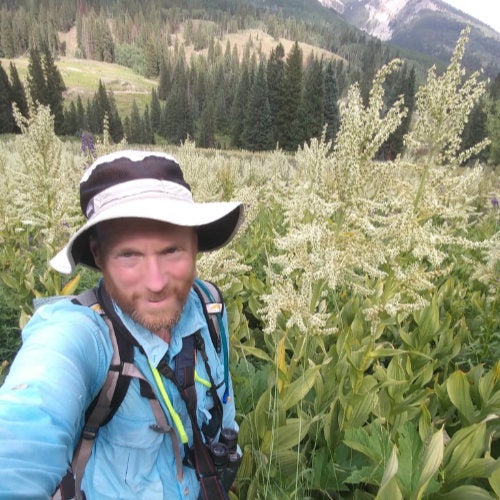- Teaching Professor
- Department of Natural Resources Science
- Email: floydch@uri.edu
- Office Location: Coastal Institute, Office #111
Research
Dr. Floyd joined NRS as lecturer in August 2016. He is also master advisor to the Wildlife Biology Minor. Before arriving at URI, Dr. Floyd was an associate professor in the Department of Biology at the University of Wisconsin-Eau Claire. He also has a long history as a technician, researcher, instructor, and undergraduate mentor at the Rocky Mountain Biological Laboratory in Gothic, Colorado. Over the last twenty years, Dr. Floyd has taught a broad range of undergraduate classes, including introductory ecology, physiology, and evolution; animal behavior; and wildlife biology. Dr. Floyd’s most recent research focuses on habitat selection by yellow-bellied marmots (Marmota flaviventris) in the Great Basin of western North America, and nest-site selection by red-naped sapsuckers (Sphyrapicus nuchalis) in the Rocky Mountains of Colorado. His past work includes population genetics studies of Mexican fishing bats (Myotis vivesi), golden-mantled ground squirrels (Spermophilus lateralis), and Channel Island spotted skunks (Spilogale gracilis amphiala). Dr. Floyd’s research background is infused into his teaching philosophy, which emphasizes active learning and a hands-on understanding of how science is done. Students in Dr. Floyd’s classes learn research techniques through field trips and lab activities, work collaboratively to design and carry out a research project, write a proposal and final paper, and present their work in front of the class.
Education
Ph.D. Ecology, University of California at Davis, 2002
B.Sc. Zoology, University of Oklahoma, 1992
Selected Publications
- Wells CP, Tomalty KM, Floyd CH, McEachern MB, May BP, Van Vuren DH. 2017. Determinants of multiple paternity in a fluctuating population of ground squirrels. Behavioral Ecology and Sociobiology 71:42.
- Floyd CH and Martin, K. 2016. Avian ecosystem engineers: birds that excavate cavities. Ch. 10. In: Why Birds Matter. ed. CH Sekercioglu, DG Wenny, and CJ Whelan. University of Chicago Press.
- Glass JR, and Floyd CH. 2015. Effects of riparian zone proximity on avian species richness and abundance in montane aspen woodlands. Journal of Field Ornithology 86:252–265.
- Sekercioglu CH, Wenny DG, Whelan CJ, and Floyd CH. 2015. Bird ecosystem services promote biodiversity and support human well-being. Ch. 12. In: Why Birds Matter. ed. CH Sekercioglu, DG Wenny, and CJ Whelan. University of Chicago Press.
- Floyd CH, Van Vuren DH, Crooks K, Garcelon D, Belfiore N, Dragoo J, and May B. 2011. Genetic differentiation of island spotted skunks, Spilogale gracilis amphiala. Journal of Mammalogy 92:148–158.
- McEachern MB, Van Vuren DH, Floyd CH, May B, and Eadie JM. 2011. Bottlenecks and rescue effects in a fluctuating population of golden-mantled ground squirrels (Spermophilus lateralis). Conservation Genetics 12:285–296.
- Floyd CH, Flores-Martínez JJ, Herrera LG, Mejía O, and May B. 2009. Conserving the endangered fishing bat (Myotis vivesi): Microsatellite variation indicates extensive gene flow among islands in the Gulf of California. Conservation Genetics 11:813–822
- Losin N, Floyd CH, Schweitzer T, and Keller SJ. 2006. Relationship between aspen heartwood rot and the location of cavity excavation by a primary cavity-nester, the red-naped sapsucker. Condor 108:706–710.
- Floyd CH, Van Vuren DH, and May B. 2005. Marmots on Great Basin mountaintops: using genetics to test a biogeographic paradigm. Ecology 86:2145–2153
- Floyd CH. 2004. Marmot distribution and habitat associations in the Great Basin. Western North American Naturalist 64:471–481.
Courses
- BIO 366 Vertebrate Biology
- NRS 223 Conservation Biology
- NRS 305 Principles of Wildlife Ecology and Management
- NRS 309 Wildlife Management Techniques Laboratory
- NRS 324 Mammalogy
- NRS 407 Endangered Species Conservation

